
HIT THE ROAD…. “JACK”
It was a nice sunny day for a morning walk and the company was ready. Captain Jack Merrill gave the signal and we moved out of our base camp area and headed to one of the checkpoints or exits of Camp Rainier.
We emerged outside of the base camp perimeter and the company traveled along in single file. (See photo 21)

Our first objective on this mission was to prevent a convoy from getting ambushed along a section of road they were coming in on. We had to get there and secure the area before they passed by. Much of this route to this destination was a narrow road. There were reports that this road was mined and booby-trapped. I guess you could say mines and booby-traps were part of the territory, and the VC were experts at constructing and hiding them. Many booby traps were put together from unexploded U.S. bombs and other munitions. The enemy could either make these devices self-detonate or explode by a remote control. Avoiding these frightful death traps was crucial to survival, but first they had to be found. Detecting them before they were triggered or detonated was extremely difficult and was the real key to continued existence. In the next few days we were to find out how heavily booby-trapped this area was.
Photo 21. Alpha Company on the move
While the CP group walked point in the center of the road, the company followed behind, keeping it spread out between each other. (See photo 22).
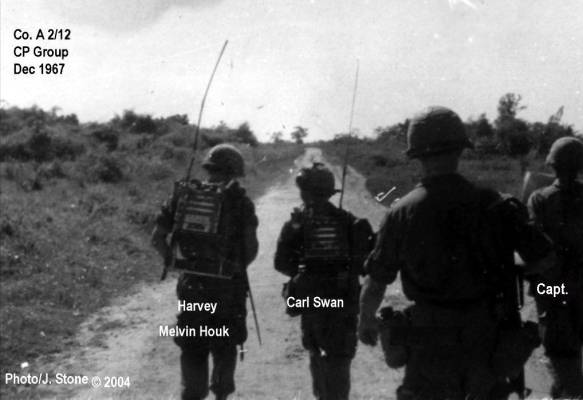
Photo 22. Harvey, Swan, and on far right Captain Merrill
Note: Original album had “Sgt. Taylor” under photo—Not sure—possibly Draughon in foreground
As we walked the road, we would check approaching civilians (see photo 23) for ID (identification). At least they looked like civilians, the way they were dressed. Some adults rode motorbikes (see photo 24) and some were kids on bicycles (see photo 25).
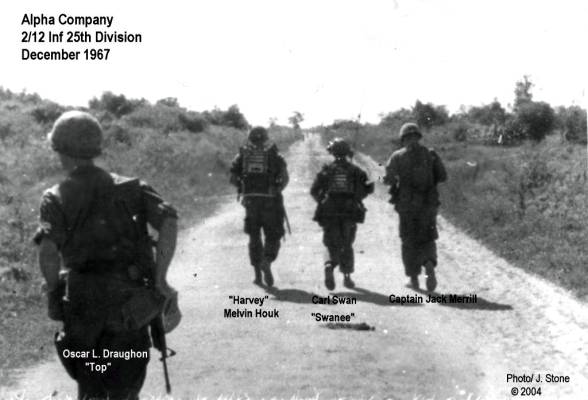
Photo 23.
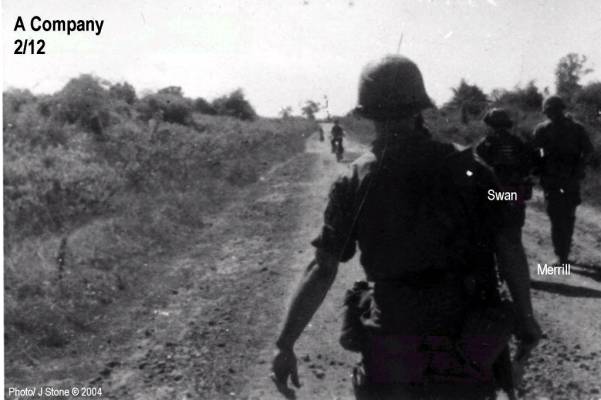
Photo 24. Swan and Capt. Merrill on right
Note: Original album had “Sgt. Taylor” under photo— Not sure—possibly Draughon
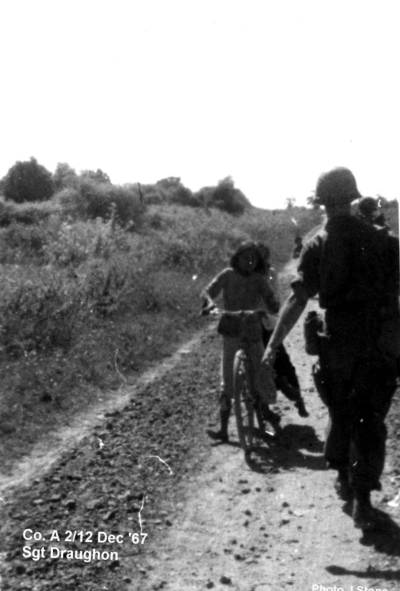
Photo 25.
At some point along this road we changed course and headed into the bush to our first objective (see photo 26). We emerged from the bush, into a wooded area and set up a blocking type ambush for the convoy.

Photo 26. Heading into the bush
We set up our positions about forty-to-fifty feet from the point where we came out of the brush. We were spread out pretty much in what appeared to be an uncultivated rubber tree area, with rather young trees. The ground between the trees had a lot of foliage or undergrowth. I found a low spot and settled down. I was on the outside of the CP group and could not actually see the roadbed surface. I do not know if both sides of the road were protected, but I was on the right. From my position, the thick foliage behind me wasn’t too far away—maybe twenty feet at the maximum. We could have been right in front of an enemy ambush position with no chance of survival. Way too close for comfort in my field manual. In this situation, the more distance between the wood line and me the better—starting at fifty meters is good. I frequently did a three hundred and sixty degree scan of the area while waiting for the convoy. I also ate and even played with my camera a couple of times. It wasn’t too long—I could hear the engines of the trucks. As the convoy passed by from my left to right, I could barely see the vehicles through the trees, as if they were camouflaged. I took the photos anyway (see photos 27, 28, 29, 30). I was just getting comfortable when the last truck had passed by and heard “saddle up, were moving out”. With the first objective complete, I rejoined the Captain and the RTO’s and the company headed to a fire support base to meet up with another convoy.

Photo 27. U.S Convoy — Very hard to see
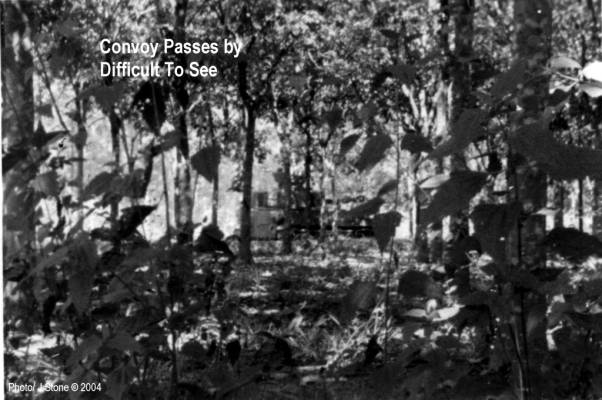
Photo 28. U.S. Convoy — Almost camouflaged
Took the photos anyway
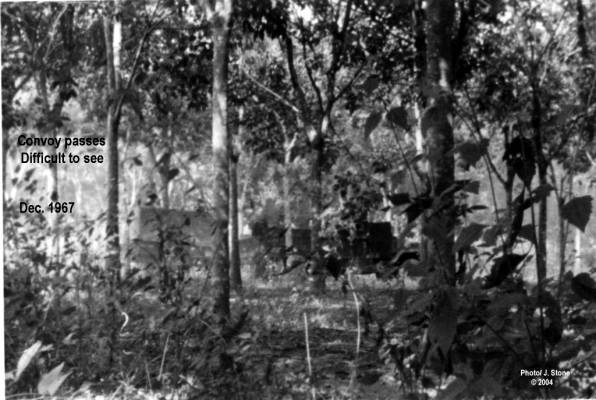
Photo 29. Convoy— There’s a truck in there!
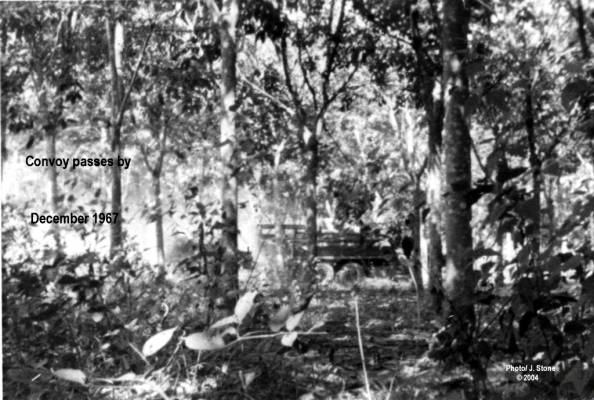
Photo 30. U. S. Convoy passes by
We arrived at this base, which was located on a sharp curve on a road. Just real disappointed I never recorded the actual map location of this place in reference to base camp but it may have been FSB (fire support base) Allen. I don’t believe this location was too far from our previous position, but the total mission time used a large extent of the day.
From what I saw from the road, the support base didn’t look like much. More like a small compound. I remember seeing one armored personnel carrier (APC) and maybe one or two trucks when we arrived here (see photo 31).
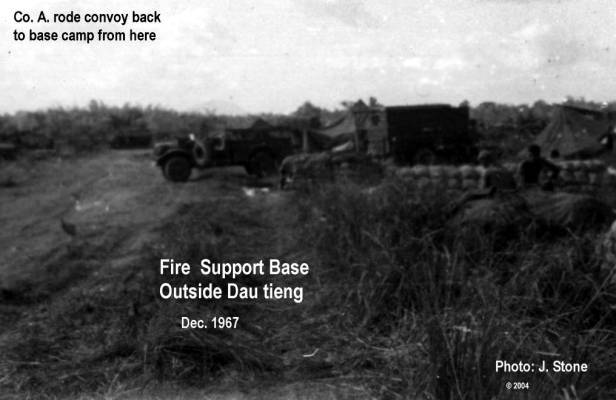
Photo 31. FSB (Fire support Base) outside Dau Tieng
In a short time, some more trucks, jeeps and a lead tank came out from nowhere. Our company boarded these vehicles and headed back to base camp. I rode back to camp Rainier on a jeep (see photos 32,33,34) with the Captain, Sgt. Draughon Swan and Harvey.

Photo 32. Jeep ride back to Base Camp Rainier

Photo 33. Swan riding on the jeep fender
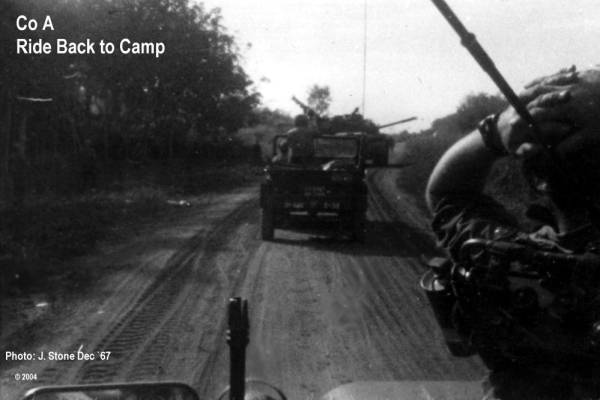
Photo 34. Convoy back to Base Camp
As we rode back past some small farms and villages, I took a few photos. The villages appeared so peaceful—some even too peaceful (see photo 35). Many people were hard at work on their farms and in the fields (see photo 36 and 37).
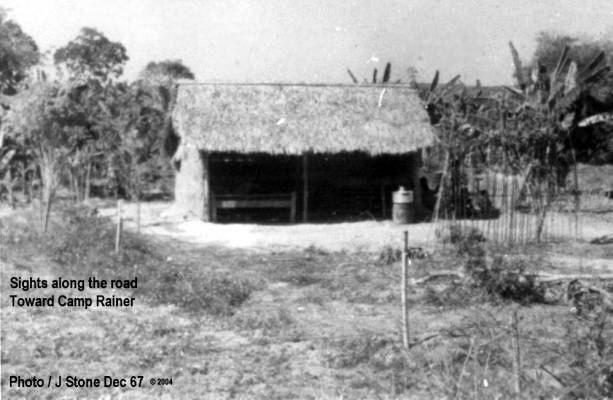
Photo 35. A “hooch” on one of the farms along the road


Photo 37. Farmer in the rice paddy
Photo 36. Mama-san cleaning rice
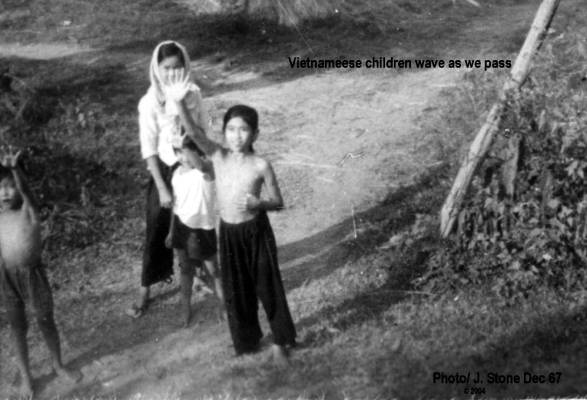
Photo 38. Vietnamese children wave and smile as we pass
The villagers, mostly kids (see photo 38 and 39) were so cute and friendly, waving as we went by.
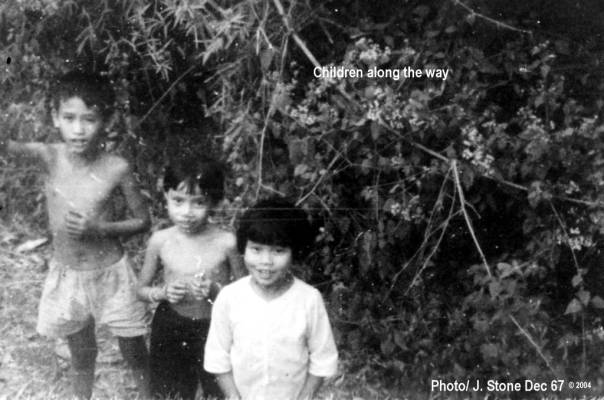
Photo 39. Beautiful, happy children along the road.
Always a possibility any civilian could be a VC sympathizer. You really couldn’t tell just by looking at their appearance. You just had to be aware of this and stay on the alert. I would always look for anyone that was covering their ears with their hands or plugging their ears with their index fingers—a real good indication that some thing was going to blow, and they knew about it. I even saw a few village stores on the trip (see photo 40) back to Dau Tieng.
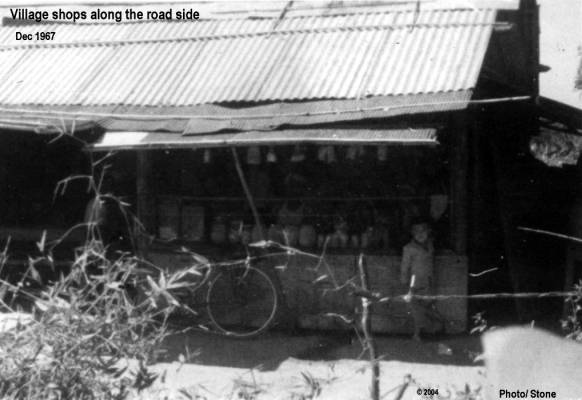
Photo 40. Roadside village store
A few times during the trip, the convoy slowed down, sometimes coming to a complete stop, making us a fairly easy target for sniper fire. That made me nervous. Once in a while the Captain would stand up to see what was happening towards the front of the convoy. He almost looked like Patton standing up in front of the jeep like that. I took his picture. (Photo 41)

Photo 41. Harvey and Captain Merrill standing up in jeep
I never really did like riding convoys much, but after walking for most of the day, it seemed like a pretty good deal to me. During the ride towards camp I was amazed at how much distance we had covered on foot during the day. Not sure if I could accurately calculate the distance, but let’s just say I was beginning to know why the combat infantryman is also called a “ground pounder.” It would have been one heck of a long walk.